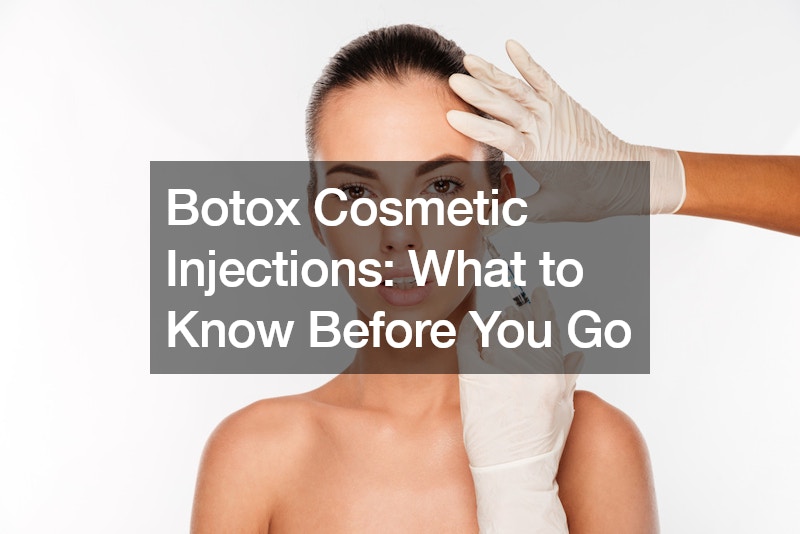Botox cosmetic injections have become a popular choice for those seeking a non-surgical facelift. By relaxing facial muscles that contribute to wrinkles and lines, Botox offers a temporary smoothing effect, leaving patients with a refreshed and more youthful appearance. But before you book your appointment, here’s a breakdown of what to expect from the procedure, including its benefits, the treatment process, and aftercare tips.
Understanding Botox
Botox, or Botulinum toxin type A, is a purified protein derived from a bacterium. In the world of cosmetics, it works by temporarily blocking the nerve signals that tell your facial muscles to contract. This relaxation reduces the appearance of wrinkles and fine lines caused by repetitive muscle movements like frowning, squinting, and raising eyebrows.
Benefits of Botox Cosmetic Injections
Botox offers several advantages for those seeking a non-surgical approach to wrinkle reduction:
- Reduced Wrinkles and Lines: The primary benefit is the visible smoothing of wrinkles and lines, particularly on the forehead, around the eyes (crow’s feet), and between the brows (glabellar lines).
- Preventative Treatment: Botox can be used not only to treat existing wrinkles but also to prevent their formation. By relaxing muscles prone to repetitive movement, Botox can help reduce the development of deep wrinkles over time.
- Non-Surgical Procedure: Unlike a surgical facelift, Botox is a minimally invasive procedure with minimal downtime.
- Relatively Quick Results: You can typically see visible results within a few days, with the full effect kicking in after two weeks.
- Tailored Treatment: Botox injections can be customized to target specific areas of concern, allowing for a natural-looking result.
- Relatively Short Treatment Time: The injection process itself is quick, usually taking about 10-15 minutes.
- Minimal Discomfort: The procedure is generally well-tolerated, with only minor discomfort during injection.
What to Expect During the Treatment
A consultation with a board-certified dermatologist or plastic surgeon is crucial before undergoing Botox injections. During the consultation, the doctor will discuss your goals, assess your medical history, and determine if Botox is the right treatment for you.
Here’s a general overview of the treatment process:
- Preparation: You may be advised to stop taking certain medications or blood thinners a few days before the procedure to minimize the risk of bruising.
- The Procedure: The doctor will cleanse the treatment area and may apply a topical anesthetic to numb the skin. A thin needle is used to inject small amounts of Botox into specific muscle groups. The number of injection sites and the amount of Botox used will vary depending on your desired outcome.
- Aftercare: After the procedure, you might notice slight redness, swelling, or bruising at the injection site. These effects are typically temporary and should subside within a few days. It is recommended to avoid strenuous exercise for 24 hours and to refrain from touching or massaging the treated area.
The Effects of Botox
The results of Botox typically last for 3-4 months. With repeated treatments over time, the effects may become more prolonged as the muscles weaken and require less frequent injections.
Who is a Good Candidate for Botox?
Botox is generally safe for most healthy adults. However, it is not suitable for everyone. People with certain medical conditions, pregnant or breastfeeding women, and those taking specific medications may not be suitable candidates. It’s important to discuss your medical history thoroughly with your doctor to determine if Botox is right for you.
Choosing the Right Injector
Since Botox injections involve precise placement, choosing a qualified and experienced injector is critical. Opt for a board-certified dermatologist or plastic surgeon with a proven track record in cosmetic procedures. Don’t be afraid to ask questions about their experience with Botox and to see before-and-after photos of their work.
Beyond Wrinkles: Other Uses for Botox
While most commonly associated with wrinkle reduction, Botox has other medical applications. It can be used to treat chronic migraines, excessive sweating (hyperhidrosis), and muscle spasms.
Botox vs. Fillers
It’s important to distinguish Botox from dermal fillers. While both are injectable treatments used for facial rejuvenation, they work differently. As mentioned earlier, Botox relaxes muscles to reduce wrinkles. Fillers, on the other hand, add volume to specific areas of the face to plump lips, smooth out deep lines, or enhance facial contours.
Considering a Non-Surgical Facelift?
Botox cosmetic injections offer a safe and effective way to achieve a smoother, more youthful appearance without surgery. By understanding the benefits, the treatment process, and the importance of choosing a qualified injector, you can make an informed decision about whether Botox is right for you. Remember, a consultation with a board-certified professional is the first step
.


